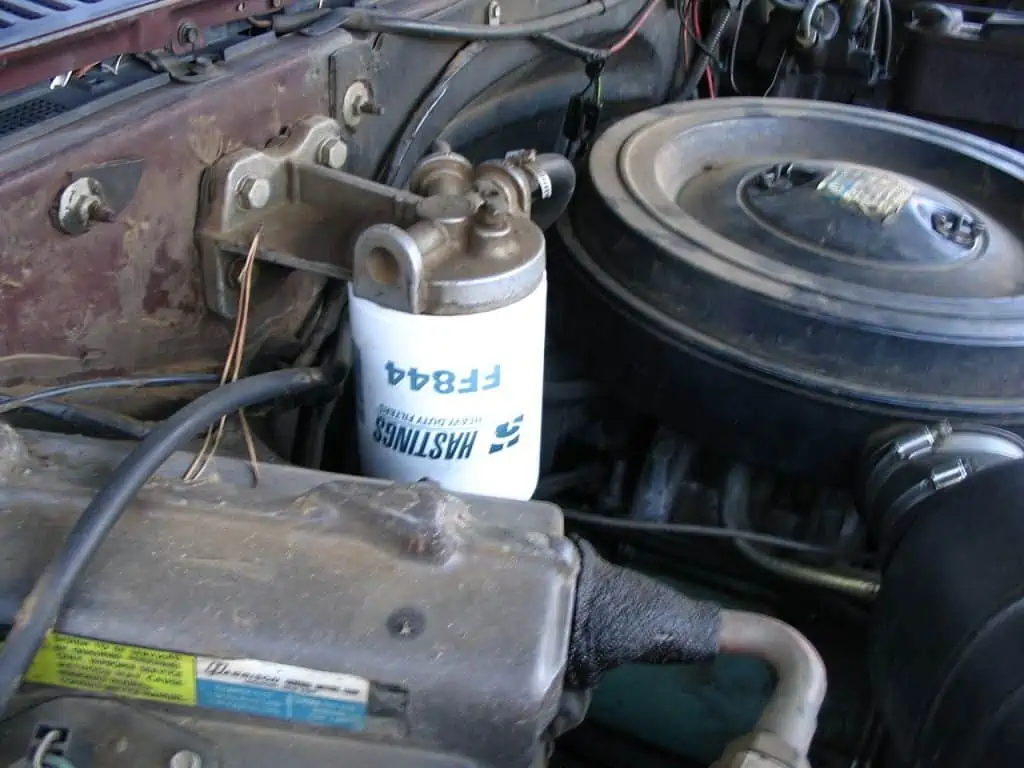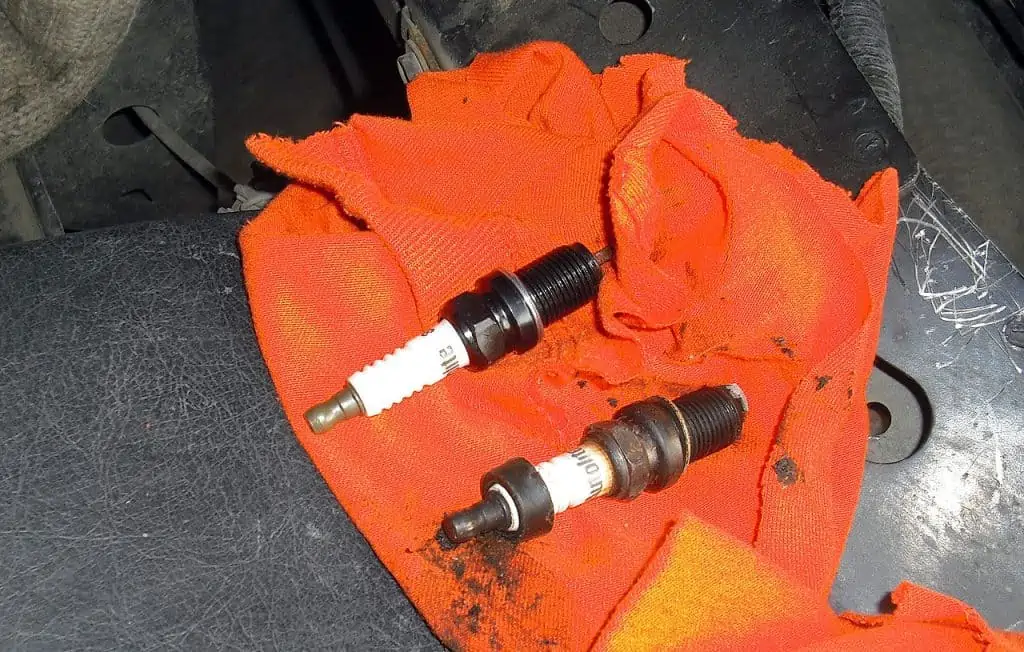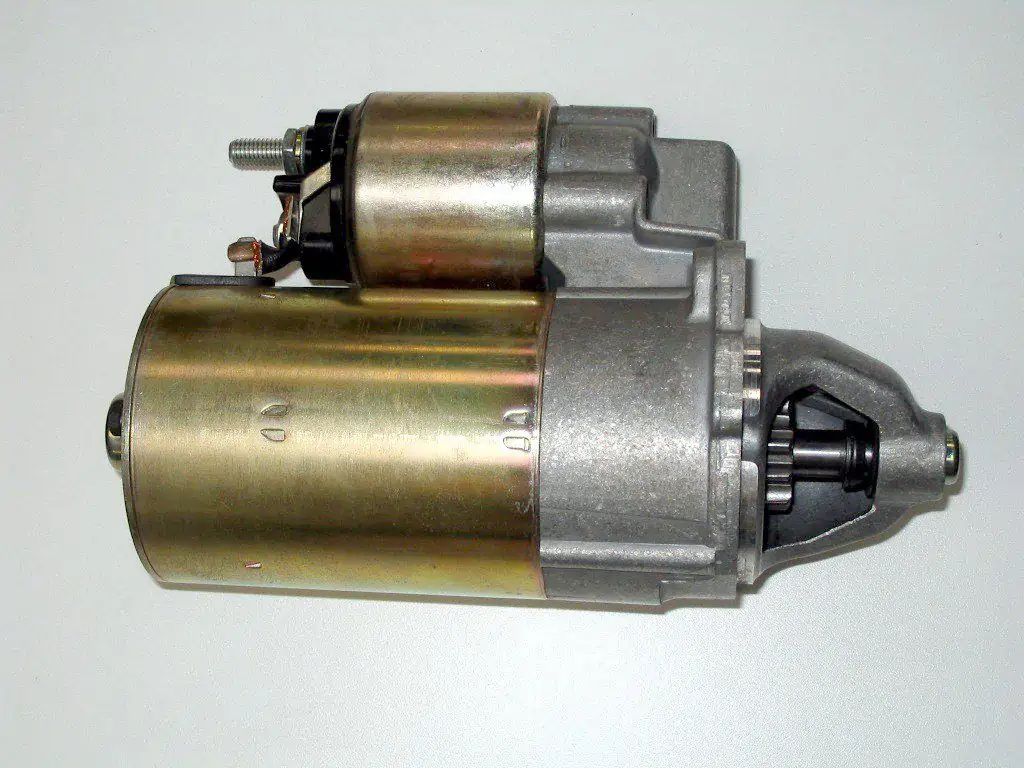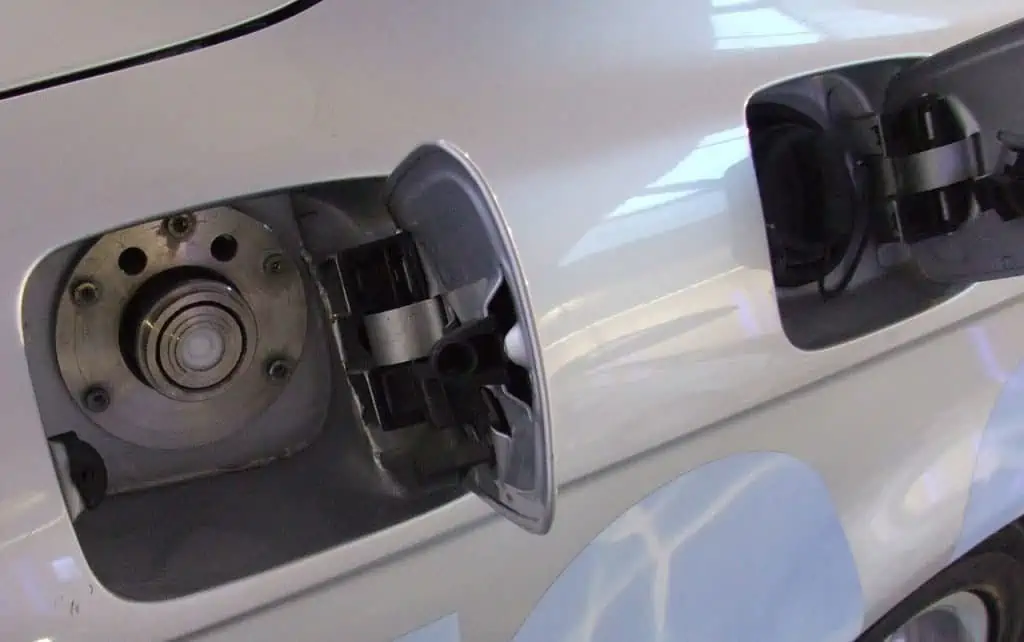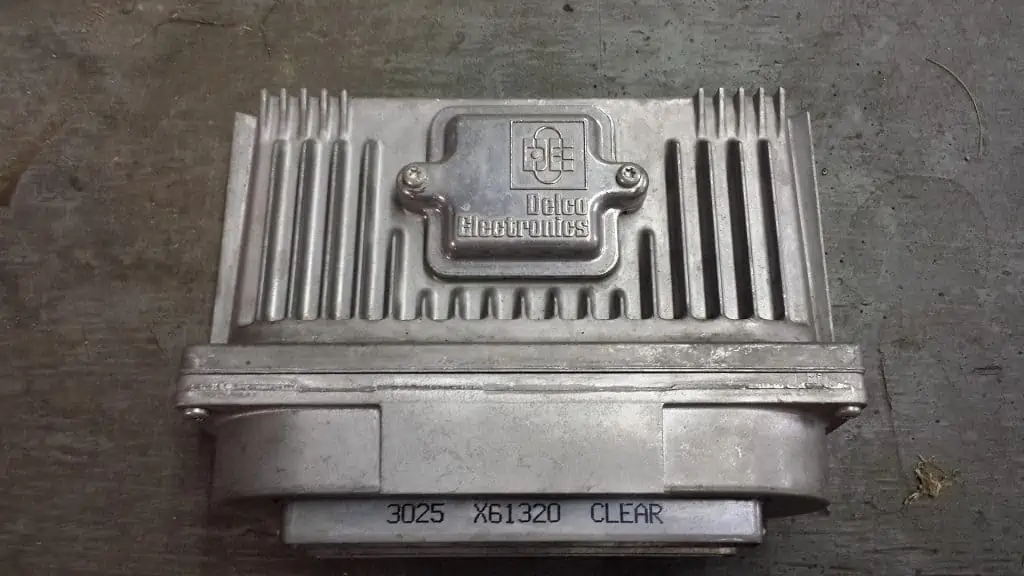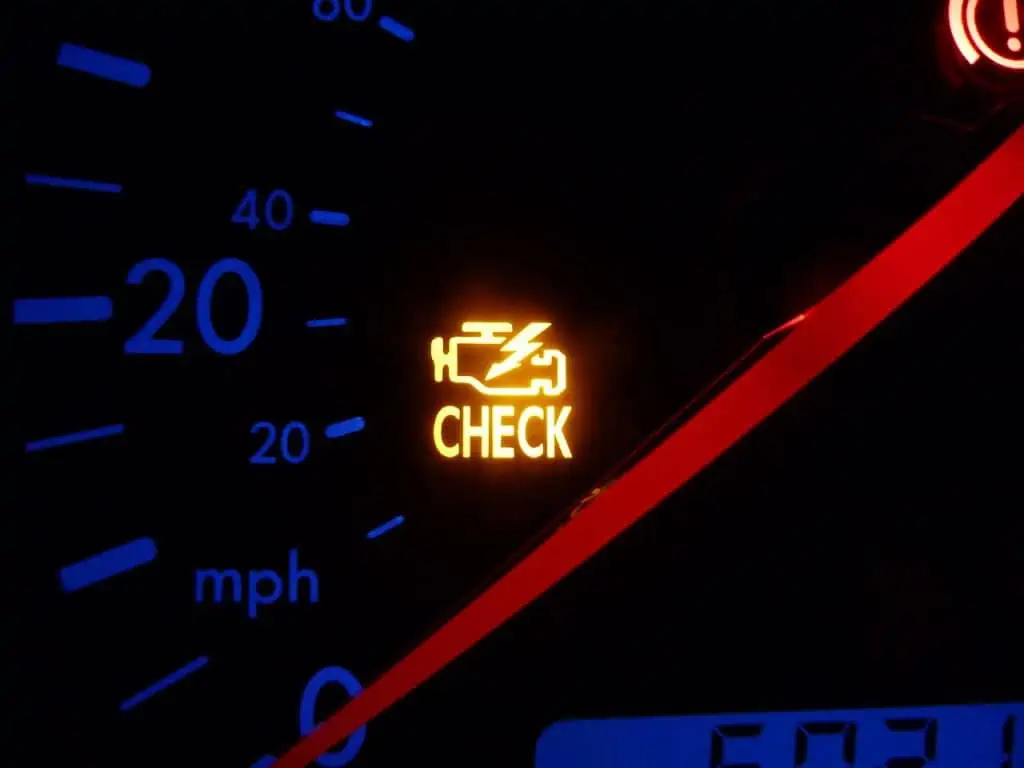Without the fuel pump, your engine would run out of fuel and stop immediately. How can you determine if the fuel pump is malfunctioning?
The fuel pump is a critical part of your car. Your vehicle would quickly perish without it.
A fuel pump is required in every gas and diesel car nowadays, however, in earlier models, the fuel was only delivered by gravity.
A fuel pump may get damaged or stop working for many reasons, such as frequent use of contaminated or subpar fuel.
You will discover the location, price, and frequent signs of a bad fuel pump in this post. Let’s start by quickly going through the warning indicators you should be on the lookout for.
Engine stalling, misfires, excessive exhaust smoke, and engine hiccups are the most typical signs of a faulty fuel pump. On your dashboard, you can also see an illuminated check engine light.
The part of your car you spend the least amount of time thinking about is probably not the fuel pump. Your fuel pump is one of many components in your car that often just works, unlike your engine, which requires annual oil changes, or your gearbox, which is expensive and frequently forces owners to purchase a new vehicle when it needs replacing.
A typical fuel pump doesn’t require any maintenance to keep it operating and may run for years without any hitches or issues.
Modern electric fuel pumps offer efficiency upgrades that help everything else in your vehicle run longer, making them even more dependable than earlier models.
But despite the contemporary fuel pump’s advantages in terms of longevity and efficiency, it will periodically cease operating or begin to malfunction. The only course of action at that point is to replace the pump.
You might get some quick solutions from this, but you want to learn more about the problems. Fortunately, this article will tell you all you need to know about your fuel pump and how much it will cost to repair it.
A Fuel Pump: What Is It?
Delivering fuel to the fuel injectors, which then inject it into the combustion engine system, is the primary duty of the fuel pump. Mechanical fuel pumps, located outside the fuel tank and working under low pressure, are often used to provide fuel to carburetor engines.
Fuel injection pump by Panoha / CC BY-SA 3.0. The major function of the fuel pump is to supply fuel to the fuel injectors, which subsequently inject it into the combustion engine system. Carburetor engines frequently employ mechanical fuel pumps that are external to the fuel tank and operate at low pressure.
Diesel engines, which do not require carburetor engines, frequently employ two primary pumps to supply fuel, each of which is powered by electricity and enhances performance efficiency.
Two pumps are used: one is placed within the fuel tank and distributes more fuel at low pressure, while the other is placed close to or inside the engine and draws in the necessary quantity of fuel at a greater pressure.
The fuel pump runs under certain parameters that are electronically regulated to optimize the air-fuel mixture in the combustion engine for optimal efficiency and proper operation. The air-fuel ratio is upset and all the fuel cannot burn effectively if the engine receives extra fuel.
Where Is the Fuel Pump Located In a Car?
On contemporary autos, the fuel pump is often found inside the fuel tank at the top. To access the fuel pump, there may be a cover beneath the backseat or in the trunk of some vehicles.
Unfortunately, some vehicles require you to remove or lower the fuel tank to access it.
There is an external fuel pump that is situated outside the tank in certain vintage vehicles.
Which are the Various Types of Fuel Pumps for Cars?
For autos, there are primarily two types of fuel pumps: mechanical and electric.
1. The Mechanically Powered Fuel Pumps
Levers are used in mechanical fuel pumps to drive a plunger or a diaphragm. The plunger or diaphragm is operated by the lever’s connection to a camshaft, which pushes it up and down to pump fuel through several one-way valves.
Since vehicles no longer utilize carburetors, this kind of fuel pump is less popular, but if your vehicle has one, it will cost less to replace it with another mechanical device.
Older cars with carburetors will feature a mechanical fuel pump that is either a plunger-type pump or a diaphragm pump. They operate effectively with vehicles that have engines that are under 450 horsepower.
The most practical and affordable fuel pumps to pick from may be mechanical ones. They may be simpler to obtain, which would result in decreased labor costs.
To move the fuel through the various parts, mechanical fuel pumps employ a pulling force. They are often installed on the engine block, and the pump is driven by the camshaft of the engine.
An intake valve that closes when the float bowl of the carburetor is full and opens when additional fuel is required controls the flow of fuel.
Mechanical fuel pumps frequently have problems such as fuel leaking from the diaphragm into the crankcase, vapor lock in the pump, a broken diaphragm spring, and insufficient fuel pressure.
2. The Electric-Powered Fuel Pumps
Similar to manual fuel pumps, electric fuel pumps use an electric motor to drive them rather than a lever and diaphragm. In contemporary vehicles with fuel injection systems, electric fuel pumps are commonplace.
In addition to reducing gas use, these pumps may also pre-deliver fuel for more sophisticated fuel systems, such as those seen in cars that restart themselves when idling at a stoplight.
Fuel pumps are electric in modern vehicles with fuel injection systems. Instead of pulling the fuel through the various components with diaphragms or plungers, these pumps use an electric motor to push the fuel instead.
On a bracket that can be reached through an access port on top of the fuel tank, electrical fuel pumps can be fitted within the tank. Designed to be immersed in fuel, these pumps. The fuel tank’s exterior houses external electric fuel pumps.
The Powertrain Control Module (PCM) and Engine Control Unit (ECU) provide power and control for electric fuel pumps, respectively. Pressure regulators are used in controlling the fuel.
Electrical fuel pumps frequently have wiring problems, faulty pressure gauges, engine overheating, and contamination.

How Do Fuel Pumps Operate?
Mechanical fuel pumps, often mounted outside the fuel tank, were far more prevalent in the past. Such technologies are obsolete in light of the development of electronic fuel injection present in contemporary vehicles.
Electric fuel pumps, which are often positioned within the fuel tank, have taken their place. Positive pressure produced by the pump pushes fuel through the lines and into the engine. It is placed in a cold liquid, farthest from the engine, where it is less likely to ignite a fire, thanks to a pump in the tank.
A direct-current electric motor is used by a contemporary fuel pump to take fuel from the tank. It delivers it to the cylinders by passing it through the fuel injectors. Combustion is caused by the fuel and air combining, along with a spark from the spark plugs. Any contaminants are screened by a filter on the pump’s intake to keep them out of the fuel lines and eventually your engine.
There are several advantages to the widespread use of electronic fuel pumps. These include lower fuel usage due to its operation being metered by the electronic control unit (ECU) of the vehicle.
The pre-delivery of fuel, made possible by the fact that the pump is no longer controlled by engine revolutions (RPM), is a further advantage. For this reason, more cars now have an auto start and stop systems that shut off the engine in stop-and-go traffic and at stoplights.
What are the Warning Signs of a Failing Fuel Pump?
Many consumers struggle to identify the source of their problems when they first arise since fuel pump issues are so uncommon in a vehicle’s lifespan.
Although fuel pump issues are typically extremely obvious in your car, it can be annoying to know that something is wrong but not to know exactly what.
The good news is that this list will enable you to identify fuel pump issues when they arise.
The following are some of the most typical signs of a failed fuel pump.
1. The Check Engine Light Comes On
Okay, so this isn’t a symptom, but sometimes a malfunctioning fuel pump may also cause your check engine light to illuminate.
Do not panic; this light just indicates that certain vehicles’ engine monitoring systems also check fuel pump operation. This does not suggest that your fuel pump has harmed your engine.
The check engine light may also be the first indication that something is amiss, and many cars will identify the issue before you experience any symptoms. However, it is preferable to replace your fuel pump now than wait for more issues to arise.
2. Overheating of the Engine
One of the most dreaded indications that anything is wrong with your car is overheating, not least because an overheated engine may quickly harm both itself and other vital components.
Since various system failures might result in combustion or even explosions when the engine overheats, under some circumstances overheating may even pose a hazard to the driver and any other passengers in the car.
While those situations are uncommon, you should never dismiss this warning indication of a problem.
Sadly, it’s also a rather typical sign of additional concerns, such as low coolant levels and other maintenance problems.
Fuel Injector by Ton1~commonswiki / CC BY-SA 3.0. Your engine may cough, sputter, or make odd noises while you’re driving, which are signs of a broken fuel pump. The only major negative to this symptom is that it may sound and feel similar to other fuel system problems, such as broken fuel injectors or a fuel line leak.
Your fuel pump’s timing is one of the ways you might detect overheating. Ordinarily, it takes 15 to 30 minutes of regular operation for the fuel pump to overheat, which then triggers a cascade reaction that overheats the engine.
The majority of the time, if your car has overheated, you can switch it off, let it cool off, and then start it again. If you stop the car before overheating creates difficulties, it should start easily (unless it has severely caused damage to anything else), and this may happen as many times as you choose.
3. The Engine Sputters
The symptoms of a malfunctioning fuel pump include your engine spitting, coughing, or making unusual noises while you’re driving. The only real drawback to this symptom is that it might mimic other fuel system issues, such as malfunctioning fuel injectors or a leaking fuel line, both in terms of sound and sensation.
This is a critical symptom, though, and a signal that it’s time to take your car to the shop, regardless of the underlying problem.
4. Fuel Efficiency Drops
Gas mileage beginning to decline is a further typical indication of a malfunctioning fuel pump.
This occurs as a result of the gas not reaching your engine’s combustion chamber as effectively, which reduces engine efficiency and may result in fuel waste due to improper timing.
Gas mileage reductions are a typical sign of fuel system issues, just like engine sputtering, therefore it may require a specialist to determine whether your fuel pump needs to be replaced or if there is another cause for the issue.
5. Having Trouble Starting the Car
It will be challenging to start your vehicle. A vehicle engine requires air, fuel, and ignition/spark/combustion all at once to function. Your engine won’t run if you don’t have these three.
Other causes include a malfunctioning starter, a dead battery, engine vacuum leaks, a lack of fuel, dirty fuel filters, or fuel injectors.
The starter: When the key is turned, the starter is not engaged. Nothing is audible. Possibly heard is cranking as well. If you touch the starting and it appears to assist, the starter is probably the problem. Get a fresh starter to fix this.
The Batteries are identical to starters: The battery terminals may be cleaned to guarantee a solid connection, and you can test this by checking the battery’s charge. Get a new battery and jump-start the current one to fix the problem.
6. Spark Plugs Will Quickly Become Worn Out
Fuel serves as a coolant to allow the internal engine components to be cooled. However, an excessively lean air-fuel combination might lead to high internal temperatures, which will make the spark plugs extremely hot.
The internal functioning of the engine is impacted by a malfunctioning fuel pump.
When you start observing that your spark plug burns out rapidly and frequently before it should, it’s a good idea to assume that the issue is likely caused by a broken or malfunctioning fuel pump because the tiny component in the engine is more vulnerable to speedier damage.
7. Black or White Smoke Coming from the Exhaust
You should be quite worried if your car starts to emit black smoke, especially if it isn’t powered by diesel, as this might mean that the engine has been damaged.
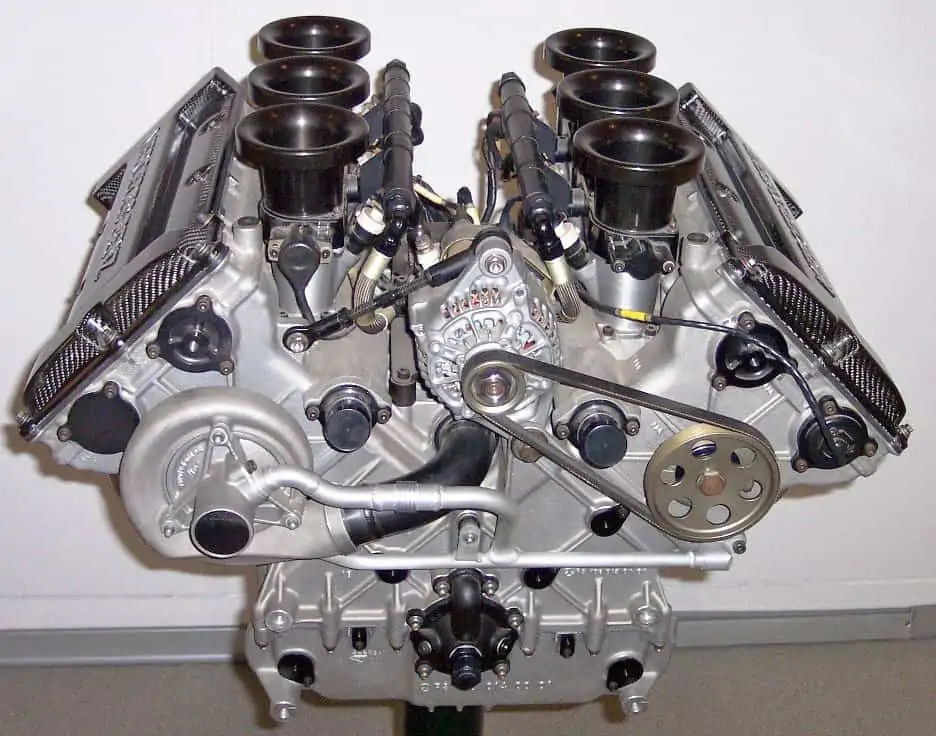
A malfunctioning fuel pump may result in a rich fuel mixture entering your car’s engine, which will result in the production of black or white smoke.
In rare cases, the malfunctioning fuel pump could be the source of a lean mixture. This is not typical in vehicles, though.
8. Turbocharger Underperformance
By compressing the air so that it can support a turbine, a turbocharger gives a car more power.
All vehicles do not come with turbochargers, but those that do may display symptoms connected to the fuel pump.
A turbocharger has a turbo lag, which is the period during which the turbos spool up air. If the turbo lag is excessive, the fuel pump may malfunction.
9. The Car Experiences Some Hiccups
Fuel is the staple nourishment for your vehicle. Like people, who gain energy from food to do activities, your vehicle will be able to satisfy your demands when it has adequate fuel.
Your car’s acceleration hiccups might be a clue that the fuel pump is malfunctioning if you press the accelerator.
This can be a result of poor fuel quality or a lack of fuel pump pressure that prevents the fuel from being injected into the combustion chamber.
Why Do Fuel Pumps Malfunction?
Fuel is delivered to the engine via the fuel pump from the tank. A simple operation that might quickly become difficult if outside influences reduce the pump’s efficiency. The following are the four causes of fuel pump problems that happen most frequently:
1. The Use of Contaminated Fuel
Fuel is put in danger by corrosion, dirt, and moisture, which introduce visible impurities into the fuel tank. The tank occasionally rusts and builds up rust particles. The fuel pump draws contaminants from the fuel tank.
Larger particles will be attempted to be removed by the pump’s filter. Unfortunately, a lot of little particles get through and do most of the damage. The brushes and commutator on the pump’s motor are damaged when microscopic material enters the pump.
2. Electricity Connection Issues in the Car
Because of the aforementioned fuel pollution, electrical problems commonly arise. The motor needs more current to produce the same pressure when the commutator and brushes degrade. The connections of the fuel pump are commonly burned by the additional current produced by a broken pump.
Burnt connections and harnesses are quite typical on failed pumps. Always do a complete connection inspection before mounting a new fuel pump. The replacement pump will break down extremely quickly if a burned connection is not repaired.
3. Starving the Car of Fuel
Fuel must continuously flow through the fuel pump to lubricate, purify, and cool the internal components. Insufficient fuel flow limits the cooling and lubrication of the pump.
One of the main causes of a faulty fuel pump is running the gas tank low. For modern vehicles without a fuel pressure return system, keeping the tank full is essential. Always check to see whether your vehicle has enough fuel.
Modern fuel pumps draw fuel from the tank using a direct-current electric motor. Through the fuel injectors, it transfers it to the cylinders. Fuel and air combine to form combustion, which is triggered by a spark from the spark plugs. A filter on the pump’s intake screens out any impurities to prevent them from entering the fuel lines and ultimately your engine.
4. Deficient Filtration of the Fuel
The filter, as mentioned above, stops silt and other particles from entering the fuel line. It acts as the first barrier against pollutants.
A blocked, dirty filter prevents the normal fuel flow, which can cause a number of the above-mentioned indications and symptoms, including sputtering, surging, stalling, or difficult starting. More importantly, it may have the same result as a fuel shortage.
5. Wear and Tear Attributed to Fuel Pump Age
Nothing is renewed by time, not even fuel pumps. Contaminants and harm will grow over time. Around the age of 6 or 8 years or right after 100,000 kilometers, fuel pumps may start to shake.
How Much Does the Fuel Pump Replacement Cost?
Fuel pump repairs aren’t very challenging, but getting to the fuel pump might be challenging. As with any liquid system, it’s crucial to avoid damaging anything or creating leaks.
Most people advise having your fuel pump replaced at a professional shop due to the intricacy of the task rather than its difficulties. They can execute the task much more quickly and efficiently than you could if you were working from home since they have the tools and knowledge to make it much simpler.
Depending on the vehicle type and labor expenses, the cost to replace a fuel pump ranges from $150 to $750 on average. $80 to $450 is the price range for a fuel pump, while labor costs $80 to $350.
Another strong reason to send your vehicle to the technician when the fuel pump has to be replaced is the cost distribution. A new fuel pump will always cost at least 50% of the total price, and in extreme situations, the pump may cost as much as 80%.
Getting a mechanic to handle the job is usually more cost-effective because labor is typically a smaller portion of the overall cost and most individuals will require 2 to 3 times as much time to do the adjustment themselves.
The fuel pump is often not particularly expensive if your car has an electric fuel pump for fuel engines. Letting a mechanic change the pump is the priciest component.
If you’re lucky, there may be a cover that allows you to access the pump from below the rear seat as the pump is frequently found inside the fuel tank. However, for other vehicle types, you need to remove the entire fuel tank to access it. The length of time is understandable.
If you have some expertise, you might be able to handle it yourself in some circumstances, but keep in mind that it is a dirty job and bad for your health.
You should anticipate a significantly higher replacement cost if you have a diesel engine and wish to replace the mechanical fuel pump. If you’re unlucky, you could have to spend up to $1600 on these pumps, and replacements are frequently fairly expensive as well. Following this, you frequently also require these pumps adjusted.
What Factors Determine the Fuel Pump Replacement Cost?
The fuel pump replacement cost should ideally depend on the type of vehicle you drive, the repair you choose, and your geographic region. However, there can be additional elements that affect how much it will cost to replace the fuel pump. These elements are
- Is there a physical issue with the fuel pump, or is it simply a minor problem?
- Driving a vehicle with a defect and causing extra harm in the process.
- Is it simple to purchase the pump’s replacement part in your area? If not, a price increase can result.
- If the old fuel pump unit needs to move any parts, it may cause further issues and potentially increase the cost of a repair when it is broken.
An automobile starter motor by Willdre / CC BY-SA 3.0. One of the signs of a faulty fuel pump is difficulty starting your automobile. The starter is not engaged when the key is turned. There is silence. Perhaps also heard is cranking. The starter is probably the issue if you touch it and it seems to help. To remedy this, start over fresh.
Is It Okay to Replace a Fuel Pump Myself to Save on Fuel Pump Replacement Costs?
The process of changing a fuel pump is rather complicated. The repair of the fuel pump is challenging, unlike the replacement of another straightforward auto engine component that is doable by a layperson.
The fuel tank must be removed to replace the fuel pump, which is a complex process. It will need heavy machinery that can only be accessed by an expert, such as jacks and elevators outside.
If the tank is full, the issue may be even more combustible and more complicated. Given these difficulties, you ought to get a qualified expert to perform the fuel pump replacement.
Grab a fire extinguisher if you feel the slightest bit like doing it yourself.
The price of labor to replace a fuel pump varies. It depends on the area, the mechanic’s shop, the make and model of the vehicle, and the services the mechanic provides. Typically, labor costs for replacing a fuel pump range from $200 to $300.
What Does a Fuel Pump Replacement Involve?
A mechanic will need to use an access panel in the passenger compartment to climb up to the failing pump via the top of the fuel tank.
Fuel is emptied from the tank, which is then lowered and removed from the car for access to the pump if there is no access panel available. The fuel pump’s connection terminals for all fuel supply and return hoses are disengaged.
The new fuel pump is then put in place of the old one after the mechanic has removed the damaged one and fastened all mounting brackets to it. Now is a wonderful time to swap out the fuel filter that sifts out particles, either the internal or inline filter. Fill the tank up once more and check for leaks.
It is preferable to have your dealership’s service center or repair shop do this relatively difficult work.
Fuel Pump Replacement: How Long Does It Take?
To replace a fuel pump, allow anything from one to six hours. This time may vary depending on the brand and model of the vehicle as well as the mechanic’s productivity.
Consider a vehicle where it is challenging to reach the top of the fuel tank, which is where the fuel pump is located; it will be challenging to do such a task quickly.
Therefore, the period may last up to 6 hours. On the other hand, because the vehicle fuel pump is conveniently located, vehicles like the Honda model will take less time.
What Do You Need to Do After Fuel Pump Replacement?
After a fuel pump is changed, nothing unusual has to be done. You might decide to swap out the fuel filter concurrently, though. Additionally, be sure to fill up your car’s gas tank for the first time after a replacement with high-quality fuel that is the right octane for it.
It is advised that you change your fuel filter every 15,000 miles as far as maintenance is concerned. Additionally, apply an anti-ethanol agent to your fuel tank to prevent separation if you don’t use up a full tank of fuel in around two weeks. Bad fuel may clog and destroy your fuel system, including your fuel pump.
How Frequent Should a Fuel Pump Replacement Be Done?
Because they frequently live longer than anticipated and lack a definite mileage cap, fuel pumps are a component that is frequently excluded from routine maintenance.
BMW fuel tank by Claus Ableiter / CC BY-SA 4.0. Corrosion, dirt, as well as moisture, inject visible pollutants into the gasoline tank, putting fuel in danger. Periodically, the tank develops rust and rust particles. Contaminants are drawn from the fuel tank via the fuel pump.
Your fuel pump should easily last for 100,000 miles or more, but after that, it might fail at any time.
This implies that the majority of petrol pumps last for years before they need to be changed, and many individuals drive for a decade or longer before they do.
Because of this, even while it might be a pricey repair, it’s also one of the less frequent ones your car can require.
How Can I Diagnose a Bad Fuel Pump on My Own?
Examine the fuel pressure. Connect the pressure gauge to the fuel system, then look up the statistics for the vehicle’s year and model. First, check the pressure with the engine off and the car on.
Then take another pressure reading while the engine is running. You should witness a reduction of 4 to 6 psi when you start the engine and readings close to the standards for a functioning fuel pump.
Replacement Procedure for the Fuel Pumps
Apart from simply changing the fuel pump, a qualified mechanic will perform a few further steps. These additional costs are required for the new fuel pump to function as effectively as other replacement parts.
- To be sure the fuel pump isn’t working, the first step is to get it tested.
- Pumping fuel is no longer under strain. It will be necessary to manually release the pressure before the repair can be completed because turning off the engine won’t do it.
- To prevent any potential sparks during the repair, the negative connector to the battery must be taken out.
- There are two typical types of pumps, one of which is situated below the vehicle directly in front of the gas tank, and the other inside. The fuel line from the tank to the pump may be followed to find this or it can be checked underneath the car.
- To get to the pump, the insulating sleeve must be taken off. Before removal, this should be loosened and let drop gently.
- All connections must be made to the pump before it can be removed once it has been discovered.
- We will start by removing the fuel lines. The low pressure and high pressure ends, sometimes referred to as a line in and a line out, will be present. The lines must first be disconnected when the hose clamp has been loosened and taken out.
- Last but not least, the fuel pump’s power cables need to be taken out. Positive and ground wires will be the two that must be unplugged. It should be a simple process as these are frequently secured in place with little nuts or screws.
- After everything is reconnected, the old pump can be taken out. All of the connections will be made when the new pump has been installed. After everything is connected, the technician will run a few tests to make sure everything is working as it should.
An Engine Control Unit by User:Mgiardina09 / CC BY-SA 3.0. Electric fuel pumps are powered and controlled by the Powertrain Control Module (PCM) and Engine Control Unit (ECU), respectively. Regulators of pressure are employed to regulate the fuel.
What Tips Should You Keep In Mind During the Fuel Pump Replacement Process?
- The fuel pump will be powered directly before being replaced to ensure that the problem is with the pump itself and not the pump’s power supply.
- If the fuel filter hasn’t been changed recently, it should be replaced anytime the fuel pump is.
- A voltage drop in the fuel pump circuit might result in overheating, thus the power supply should be checked when a failure occurs sooner than predicted.
- The fuel tank straps and fasteners should be inspected for severe corrosion and replaced as necessary if the fuel tank must be lowered during the repair.
- The fuel pump is cooled and kept lubricated by the fuel in the gas tank. To extend the life of a new fuel pump after installation, it’s advisable to maintain the gas tank at least a quarter full.
Is It Safe to Keep Driving with a Faulty Fuel Pump?
It is dangerous to drive with a damaged fuel pump, therefore you should not do it. Your vehicle won’t start if your fuel pump is malfunctioning or damaged because fuel won’t get to the combustion chamber.
If the defect or damage occurs while the car is moving, it will stop.
Please stop driving if you see any of these signs, and then call a technician in the area to have a look at it. Never operate a fuel pump that is damaged or malfunctioning.
How Can You Extend the Life of Your Fuel Pump?
Maintain at least a quarter of a full tank of gas. The fuel pump will experience less strain as a result. Make sure there are no contaminants in your fuel. Keep dirt and debris away from the gas tank entrance and the surrounding area. Less pollution means less clogging of the fuel filter.
What you need to do is recommended in detail below;
- The fuel pump may heat up after drying out and potentially fracture if you don’t maintain your fuel tank filled to a quarter of its capacity. As a result, always maintain your fuel tank at or near full.
- Because there isn’t enough gas to keep the pump cool, the fuel tank may get damaged and lose life due to overheating. So make sure there is always gas and don’t let it overheat.
- Frequent fuel filter replacements can help trap this dirt and debris and shield the fuel pump from damage. Debris and dirt can harm the fuel pump when they are taken up by it.
- Make sure the gas cap and seal are in excellent operating order; if the gas cap is not covered or is not covered enough, dirt and other debris may enter the tank through it and harm the fuel pump.
- Lack of maintenance at gas stations can result in water or rust building up on the gas pipe’s nozzles, which can harm your fuel pump and interfere with your vehicle’s fuel system. So, stay away from these petrol stations and pumping stations.
- If there is enough gas in the tank, the tank will function better and more effectively since the pump is under pressure from the weight of the vehicle growing. If there is no pressure, the fuel pump will have to work harder, which might harm it. Pressure helps the fuel pump operate properly.
The Check Engine Light by Wikiuser100000 / CC BY-SA 3.0. Many automobiles will detect the problem before you notice any symptoms, and the check engine light may be the first sign that something is wrong. To avoid more problems, it is better to replace your fuel pump right away.
Since the Fuel Pump Is In Good Condition, What Can Be the Issue?
Sometimes your vehicle can appear to have signs of a damaged fuel pump, but a closer inspection will reveal otherwise.
There may be other issues if you notice that your fuel pump is functioning well but the signs of a damaged fuel pump are still there.
- Because of a malfunctioning fuel gauge, you might not be aware that you have an empty tank. Therefore, make sure you have fuel in your tank since running out of petrol might harm your fuel pump.
- The fuel filter may have become blocked with dirt and debris, preventing fuel from reaching the combustion chamber. When the fuel filter has to be replaced, do so.
- The life of your timing belt may have expired, making it nasty and making it difficult to inhale fuel. A timing belt has a lifespan of around 5-7 years.
- If a vacuum line is moist, it is defective and has to be changed since it will influence the fuel pump and lower engine performance in general.
The Conclusion
The fuel pump in your vehicle is an essential part of efficient operation. Stressful fuel pump issues are common, especially if you commute frequently or depend significantly on your car.
If the fuel pump in your vehicle breaks, you need to repair it right away. Don’t let it continue to deteriorate until it does irreparable harm to other components of your car’s engine.
As per normal, to guarantee you get the best bargain possible, request price quotations for the cost of replacing a petrol pump from different stores in your neighborhood.
If not serviced, a malfunctioning fuel pump might damage your car and leave you stranded. It’s crucial to address the problem as you start to experience symptoms or see your “check engine” light.
The easiest approach to save time and money over time if your fuel pump has to be replaced is often to hire a trustworthy, certified mechanic to do it.


Nyangano Maurice specializes in vehicle troubleshooting and has more than 10 years of experience in the automobile industry. Over many years of experience as a car mechanic, he has acquired a broad range of skills, including engine repair, brake systems, electrical systems, and more. He frequently hosts community workshops and training programs to help motor vehicle owners understand their vehicles better.
